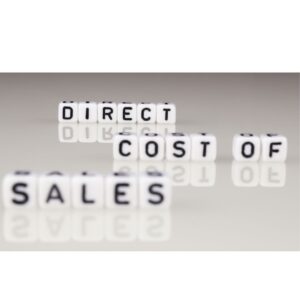Direct Costs-Understanding how a firm spends its money can help you make informed and financially responsible decisions at work, especially if you are in a position of leadership. One sort of company expense is known as “direct cost” since it directly accounts for the items required to run a business on a daily basis. If you can identify direct costs in your firm, you may be able to reduce expenditures and boost profit. In this post, we describe direct costs and provide instances of the benefits of direct cost approaches.
8 Online Sales Certificates You Must Have
What exactly are direct costs?

Direct costs are expenses that are directly related to the operations of a firm. Labor, materials, and fuel, for example, are typically considered direct costs because they contribute directly to production. Direct costs differ from indirect costs in that they can be explicitly linked to a specific item or service, also known as a “cost object.” This is in contrast to indirect expenses, which assist a firm run but aren’t tied to a specific cost object, such as overhead and financial services.
Because direct costs fluctuate depending on the type of product and market circumstances, they are frequently referred to as variable costs. For example, the cost of iron for a manufacturing plant will vary depending on its market worth.
10 Best Presentation-Making Apps To Ameliorate Your Presentation Show
The advantages of employing direct cost methods
Direct cost methods are financial strategies that base budgeting and other business choices on the direct cost of operations. They do not incorporate indirect expenses in their per-unit or total manufacturing cost assessments. The following are some advantages of employing direct cost methods:
Specificity
Direct cost approaches are typically more advantageous for specific departments or initiatives inside a company. This is due to the fact that smaller segments of an organisation may be able to more easily correlate specific costs with a single cost item. This can be an effective technique for determining the profitability of individual customers or products.
Budgeting
Direct cost methods can also make it easier to calculate a business’s or unit’s budget for the future year. This is due to the fact that direct costs might vary, and accounting for prospective changes in those expenses may have a favourable impact on budget accuracy. This benefit is dependent on the amount of direct and indirect costs in a firm or division, therefore you should conduct a thorough analysis before deciding on a cost technique.
determining the price
When determining the pricing of items or services that your company provides, direct cost methods can be effective. This is due to the fact that direct costs can vary, and it can be beneficial to account for potential changes in production costs when calculating prices. You could, for example, choose to pass on a portion or all of an increased direct cost to the customer, or find a way to balance it out with another direct cost that can be reduced.
Profit estimation

Direct cost is a useful method for calculating specific earnings based on a product or product line. This data can be valuable for comparing items or determining your breakeven point, or the point at which a business neither wins nor loses money.
managerial command
By allowing lower-level managers to evaluate the cost of a specific product or service, direct cost approaches can help keep some decision-making processes closer to the product line. This is because direct costing associates specific expenses with specific products or departments, allowing responsibility to be assigned to a single manager or a leadership team. This could improve organisational efficiency.
Direct cost examples
Here are some instances of direct costs that could occur in a business:
Labor
Wages for employees who directly manufacture an item are usually a direct cost because they may be linked to a single product or product line. The direct labour cost linked with a specific price object often comprises hourly wage, overtime if available, benefits, and any other payroll elements. Labor is nearly always a direct cost if it fluctuates with production, although it can be indirect if salaries are fixed—for example, if employees work a set number of hours regardless of production levels.
Commissions
Commissions, like labour, are considered direct expenses because they are linked to a definite price object. For example, if an employee sells a car and receives a commission payment, the amount received is a direct cost associated with that automobile or line of cars.
Materials
are a direct expense since they contribute directly to the manufacturing of a good or service. In a furniture factory, for example, the cost of lumber may be a direct cost because it directly contributes to the ultimate product and can fluctuate based on production levels.
Supplies

Consumable supplies are also commonly regarded as direct costs. Paper, ink, pens, and paper clips, for example, may constitute direct costs in an office setting. Similarly, the cost of sandblasting medium may be seen as a direct expense for a painting company. In both of these situations, consumable products can be specifically correlated with individual cost objects.
Transportation
Transportation, or freight, is frequently regarded as a direct expense because particular components or finished goods are transferred with each dollar spent. Direct transportation costs might include the cost of sending goods to the manufacturing facility as well as transportation between the manufacturing and sales facilities. If transportation contracts do not differ based on the amount of product moved, they may be categorised as indirect costs instead.
Some utilities and fuel
Some fuel expenses may be considered direct costs if they are directly related to a cost object such as a product or service. For example, calculating the particular amount of power required to produce one tote bag on an assembly line could be a direct cost. A gas-powered sawmill would very certainly consider gasoline to be a direct expense of manufacturing wood products. This is distinct from overhead power expenditures, such as the cost of lighting the building, which must be paid regardless of production totals.
